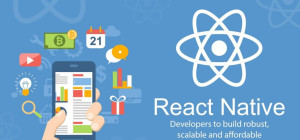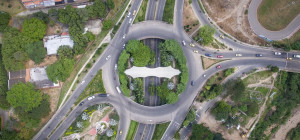Drones are rapidly transforming the way we approach delivery and surveillance services. With their advanced capabilities, these unmanned aerial vehicles are revolutionizing the industry and opening up exciting possibilities for the future. The article discusses the use of drones in delivery and surveillance services, exploring their benefits, challenges, and potential risks. It highlights how drones have revolutionized these industries and could change the way we receive our deliveries in the future. The article also covers ethical considerations, regulations, and technological advancements that enable drones to be used for environmental monitoring, disaster relief efforts, and healthcare services in remote areas.
1. What are drones and how are they used in delivery and surveillance services?
Drones, also known as unmanned aerial vehicles (UAVs), are aircraft that are operated remotely without a pilot on board. They can be used for a variety of purposes, including delivery and surveillance services. In delivery services, drones are used to transport packages and goods from one location to another. They are particularly useful in areas that are difficult to access by traditional means, such as remote or mountainous regions. In surveillance services, drones are used to monitor and gather information about a particular area or situation. They can be equipped with cameras and other sensors to capture images and data that can be used for security, monitoring, and analysis purposes.
2. How have drones revolutionized the delivery and surveillance industry?
Drones have revolutionized the delivery and surveillance industry by providing a faster, more efficient, and cost-effective solution to traditional methods. In delivery services, drones can deliver packages within a matter of minutes, compared to the hours or days it would take using traditional methods. This has the potential to revolutionize the way we receive goods and services, particularly in remote or hard-to-reach areas. In surveillance services, drones can provide real-time information and data, allowing for faster and more effective decision-making. They can also reduce the risk to human life, as they can be used to monitor dangerous or hazardous situations without putting people in harm’s way.
3. What are the benefits of using drones for delivery services?
The benefits of using drones for delivery services are numerous. Firstly, they are faster and more efficient than traditional methods, which can save time and money. Secondly, they can access areas that are difficult to reach by traditional means, such as remote or mountainous regions. This can be particularly useful in emergency situations, where time is of the essence. Thirdly, drones can reduce the carbon footprint of delivery services, as they produce fewer emissions than traditional delivery methods. Finally, drones can provide a more personalized and convenient service, as they can deliver packages directly to a customer’s doorstep.
4. How have drones improved surveillance services?
Drones have improved surveillance services by providing a more efficient and effective solution to traditional methods. They can be equipped with high-quality cameras and other sensors, allowing for real-time monitoring and data collection. This can be particularly useful in situations where human surveillance is not possible or safe, such as in hazardous or remote areas. Drones can also be used to gather information and data that can be used for analysis and decision-making purposes, such as in disaster response or security situations.
5. What are the challenges of using drones for delivery and surveillance services?
The challenges of using drones for delivery and surveillance services include regulatory issues, technical limitations, and public perception. Regulatory issues can include restrictions on airspace and flight paths, as well as privacy concerns. Technical limitations can include battery life, range, and payload capacity, which can limit the effectiveness of drones in certain situations. Finally, public perception can be a challenge, particularly in regard to privacy and safety concerns.
6. What is the future of drones in the delivery and surveillance industry?
The future of drones in the delivery and surveillance industry is likely to be significant. As technology continues to improve, drones are likely to become more efficient, effective, and versatile. This could lead to a wider range of applications, including in areas such as healthcare, environmental monitoring, and disaster response. However, regulatory issues and public perception are likely to remain challenges that will need to be addressed in order for drones to reach their full potential.
7. How will drones change the way we receive our deliveries in the future?
Drones are likely to change the way we receive our deliveries in the future by providing a faster, more efficient, and personalized service. They could allow for same-day or even same-hour delivery, which could revolutionize the way we shop and receive goods and services. This could also lead to a reduction in the use of traditional delivery methods, such as trucks and vans, which could have a positive impact on the environment.
8. What are the potential risks associated with using drones for delivery and surveillance services?
The potential risks associated with using drones for delivery and surveillance services include privacy concerns, safety risks, and technical limitations. Privacy concerns can arise from the use of drones to monitor and gather information about individuals or groups. Safety risks can include collisions with other aircraft or obstacles, as well as malfunctioning equipment. Technical limitations can include battery life, range, and payload capacity, which can limit the effectiveness of drones in certain situations.
9. How can drones be used to improve public safety and security?
Drones can be used to improve public safety and security by providing real-time monitoring and data collection in situations where human surveillance is not possible or safe. They can also be used to respond to emergency situations, such as natural disasters or terrorist attacks, by providing real-time information and data to first responders. Drones can also be used to monitor critical infrastructure, such as power plants and water treatment facilities, to detect potential threats or vulnerabilities.
10. What are the ethical considerations of using drones for surveillance services?
The ethical considerations of using drones for surveillance services include privacy concerns, data security, and the potential for abuse. Privacy concerns can arise from the use of drones to monitor and gather information about individuals or groups without their knowledge or consent. Data security is also a concern, as the information and data collected by drones can be sensitive and potentially damaging if it falls into the wrong hands. Finally, there is the potential for abuse, as drones could be used to target individuals or groups based on their race, religion, or political views.
11. How can drones be used to improve disaster relief efforts?
Drones can be used to improve disaster relief efforts by providing real-time information and data to first responders and relief organizations. They can be used to assess damage, locate survivors, and deliver supplies to affected areas. Drones can also be used to monitor and detect potential hazards, such as gas leaks or fires, which can help to prevent further damage or injury.
12. What are the technological advancements that have enabled drones to be used for delivery and surveillance services?
The technological advancements that have enabled drones to be used for delivery and surveillance services include improvements in battery life, range, and payload capacity. They have also been enabled by advancements in camera and sensor technology, which allow for high-quality imaging and data collection. Finally, advancements in drone software and navigation systems have made drones more efficient and effective in a variety of applications.
13. How can drones be used to improve environmental monitoring and conservation efforts?
Drones can be used to improve environmental monitoring and conservation efforts by providing real-time data and information about the environment. They can be used to monitor wildlife populations, track deforestation, and detect pollution. Drones can also be used to map and survey large areas of land, which can help to identify potential conservation areas or areas that require restoration.
14. What are the regulations surrounding the use of drones for delivery and surveillance services?
The regulations surrounding the use of drones for delivery and surveillance services vary by country and region. In general, they include restrictions on airspace and flight paths, as well as requirements for licensing and certification. There are also privacy concerns that need to be addressed, particularly in regards to the collection and use of personal data.
15. How can drones be used to improve healthcare services in remote areas?
Drones can be used to improve healthcare services in remote areas by delivering medical supplies and equipment to areas that are difficult to access by traditional means. They can also be used to transport medical samples and specimens to testing facilities, which can help to improve diagnosis and treatment. Finally, drones can be used to provide telemedicine services, allowing healthcare professionals to remotely diagnose and treat patients in remote areas.
In conclusion, drones have the potential to revolutionize the delivery and surveillance industry by providing faster, more efficient, and cost-effective solutions. As technology continues to improve, drones are likely to become more versatile and widely used in various applications such as healthcare, environmental monitoring, disaster response, and public safety. However, regulatory issues and public perception remain challenges that need to be addressed in order for drones to reach their full potential.







![Top CEOs under 30-The Young Guns Of Technology [Infographic]](https://lerablog.org/wp-content/plugins/wp-thumbie/timthumb.php?src=http://lerablog.org/wp-content/uploads/2015/03/the-young-guns-of-technology.jpg&w=300&h=140&zc=1)


